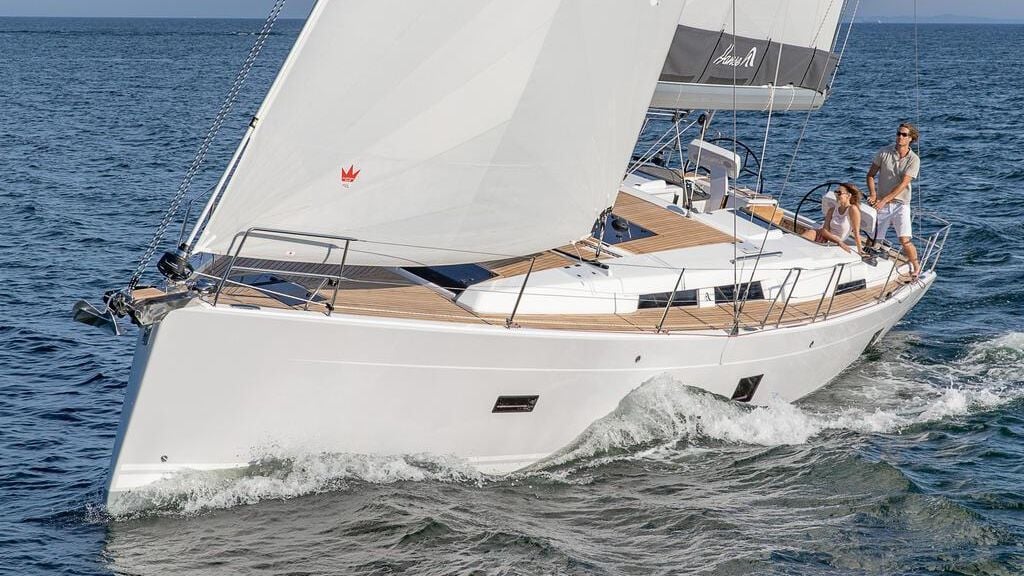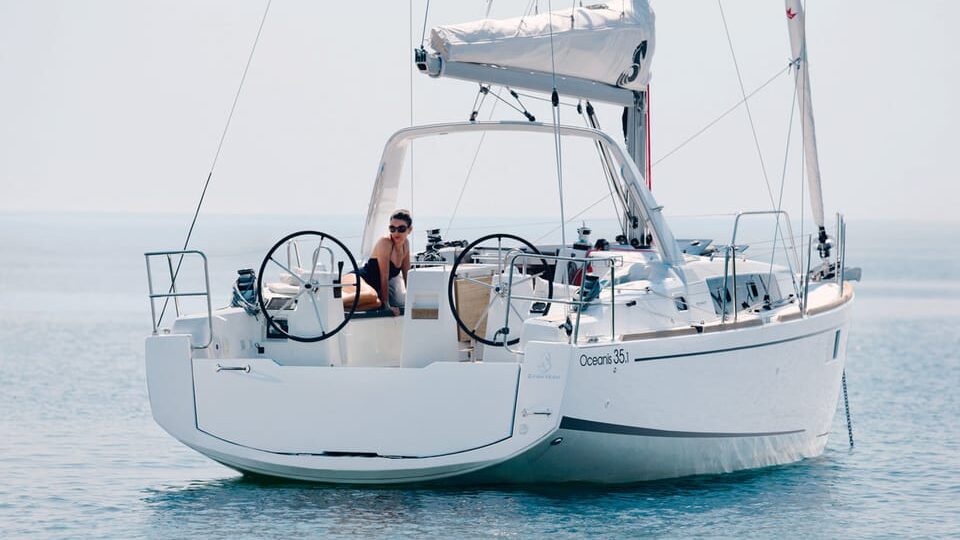Beneteau vs Hanse: Which Is Better?
The Beneteau Boats Company is a boatyard company that first started near the water in Quai des Greniers, France. It was founded in 1884 by Benjamin Beneteau, and after two generations, it is currently headed by Jerome de Metz. What started as a Dundee and lugger fishing boats-making factory became one of the best boatyards we know with over 15 different boat models produced for sport, fishing, and luxury cruising. They employ around 7,500 loyal employees whose dedication and dreams to make sailing better with avant-garde innovations, one day at a time. Today, apart from various other boatyards from where they manufacture vessels internationally, their France boatyard is now at St-Gilles-Croix-de-Vie.
Hanse Yachts used to be one small boatyard down in the Baltic in the city of Greifswald. In 1990, this boatyard was founded by Michael Schmidt, and today, it is headed by their Chairman Gert Purkert. Up to 1,500 employees work for Hanse Yachts under their different subsidiaries. They offer brands of monohulls under Hanse, Dehler, and Moody brands. Their catamaran carries only the Privilege brand. Also, Fjord and Sealine are the usual brands that their motorboats are marketed under. Since its inception in 1990, Hanse Yachts has been selling around 600 boats annually to satisfied customers. A huge part of the credit goes to the designers who are masters of customized designs; Patrick Banfield, Bill Dixon, Judel, and Vrolijk and Co., even Marc Lombard, a very renowned name in boat designing.
Beneteau vs Hanse – Overall Built Quality
Because Hanse Yachts are made by hand, their sales output might seem low (just over 13,000 since 1990), but they definitely give out a high level of customization and satisfaction to their customers; they have a reputation for building that is well deserved. When seeking to buy a Hanse boat, a selection of layout will be provided for you to allow you to mix and compose your favorite sections to your taste. You get to create your ideal layout, galley, and heads combination as you would like it and also determine the number of aft cabins you’d prefer in your own boat. This means you are practically making every design decision on the interior deck of your boat. Upholstery options boast over 40 different choices for your saloon seating, and you can choose a Hull wrap for your hull finish or just pick from the other numerous hues made available.
Hanse Yachts use either Dacron, Fast Cruising Laminate, or High-Performance Membrane for making their sailcloths, and you can either choose which works for you or let the company experts decide. For the hull, epoxy vinyl-ester resins, huge architectural subframes, carbon re-enforcements, and fully laminated bulkheads are employed to create hulls of great strength that will support all the inputs that any customer might add. Watertight bulkheads are also added as part of blue water features for bigger vessels as a safety measure. The keel is connected to the hull by bolting it up through the subframe and aluminum plate. Finally, carbon-reinforced chainplates are relied on to ensure that the rigging loads and stresses are evenly spread throughout the architectural subframe and the hull.
According to Beneteau boatyard engineers, they make use of resin and balsa core to make their hull. Resin is an ingredient that is more like a constant but the secret lies in the balsa core that they use. This balsa core permits the reduction of resin quantity in each hull constituent while still maintaining the desired structural strength. Reduction of resin constituent in the hull helps achieve less overall vessel weight. Alpi Wood is always the wood of choice in the Beneteau boatyards; they are of different varieties, colors and are totally renewable. The use of large-scale computer-assisted design programs to finely detail interior work like spray-finish sets and cutting provides the Beneteau boats with infinite options and no limitations when it comes to interior designs.
Personally, I believe that Hanse boats are built better than Beneteau boats, but there are other factors to consider as well.

>>Also Read: Beneteau Vs Jeanneau
Sailing Performance
Sailing couldn’t be better with these customized Hanse Boats with their self-tacking jib, which is a standard. Now, you don’t even need to touch any sheet or winch in this short-handed sail design; only helm handling is required to get the job done. Well-balanced rudders guarantee smooth maneuvering, and there is a feature that is useful for smooth maneuvering, especially (but not exclusively) during mooring, the direct wash from the propeller over the rudder. The thrusters are innovatively retractable, and this ensures an almost completely smooth underwater line, thereby boosting overall performance. The hull design (made by the Judel and Vrolijk and Co.) adds to the grace of the Hanse yacht performance.
Beneteau boats come with a deep-lead bulb keel end to retain their gravity no matter what weather, sea, or storm they find themselves in at any time. These keels reduce drag. There is no easy way of defining a Beneteau boat in terms of performance due to their vast range of boat models. But, if we were to look into the Oceanis 46.1, which has a balance on cruising and sporting features, we’ll see that the 46.1 is fitted with an extra-long mast which gives it extra credit in sail usage. It comes with a flat deck genoa furler and a German mainsheet system; both features enable this boat to be sailed short-handed.
The furling mast, self-tacking jib, and the set of halyards and plays brought on a single winch at each helm station can make sailing possible with only a small crew or a couple. Under the right circumstances and good sailors, a 16-knot speed can be achieved on this boat.
Judging by the dope designs that these two companies continuously add to their vessels, it is safe to say that they can both perform well in good and foul weather. Their general sailing performance, as aforementioned, is some of the features that make them able to take upon the worst of seas and without too much stress on their skippers and crew.
>>Also Read: Beneteau vs. Catalina
Comfort
The Hanse 458 is an overall 46 feet boat. This makes it ideal for comparing comfort levels with the 46-foot Beneteau Oceanis 46.1. The Hanse 458 has a large cockpit that can accommodate a large family to live aboard. The interior also has a sail-locker at the bow to store different things in case of a long voyage. There is a dining table in the saloon that can seat 8 people without discomforting any of them, and for extras, a couch that can seat 3-4 people. It also comes with a standard 2 heads for convenience. There is a variation of this Hanse boat that allows 2 cabins in the aft.
The Oceanis 46 interior design from start to finish is crafted by the Nauta Design. Mahogany Alpi Wood lines it, and there are options of lighter or darker shades of wood available. With a dining table in the U-shaped saloon that can seat about 10-12 people, this is a boat fit for a mini-extended family to lounge in for a few weeks of cruising. There are variations of one aft or two aft cabins available, all with headroom of 6’9″, more than enough for an average-sized male. There is only one head available on this version of the Oceanis, although other options can be obtained if the purchase is to be customized; however, it is rare.
Beneteau vs Hanse – Conclusion
Hanse Yachts are home to extensive design and customization, and owing to their hand-designed method of building, it might take a while to complete an order hence their seemingly small output over the years. However, you and I can agree that every one of these boats is sturdy and strong and will be durable because of the human attention each receives.
Beneteau is unrivaled in industrial boat making with many models under their belt, but indeed, it is a matter of personal choice to decide whether to go with a Hanse or buy a Beneteau. Whatever you choose, may the cruise be forever in your favor.
If you’ve narrowed your choice between Beneteau and Hanse, I would suggest you rent both of the boats for at least a week. That way, you can check first hand which boat fits your needs better. Check out the fit and finish of the woodwork, hardware fittings, overall built quality, etc. Also, look in the corners, behind the lockers, and how the rigging is seated. Again, you won’t go wrong with either Beneteau or Hanse, but you should at least get the one check checks most of your boxes.
